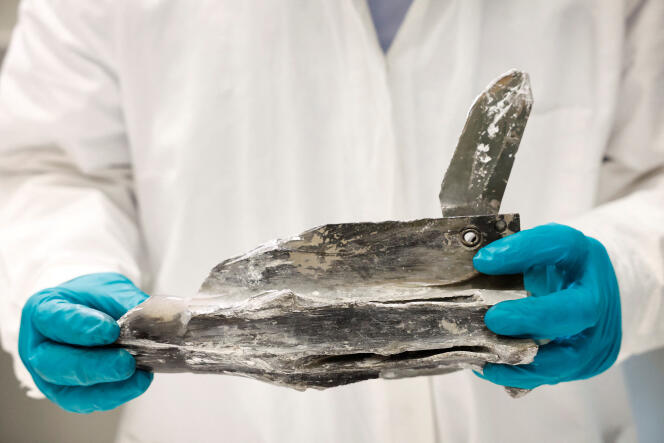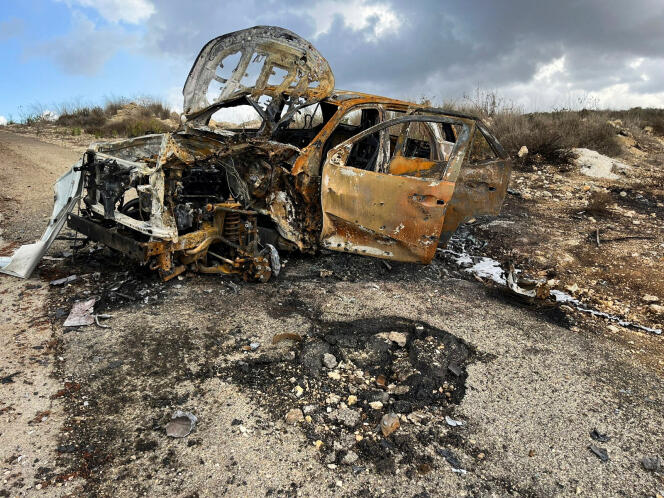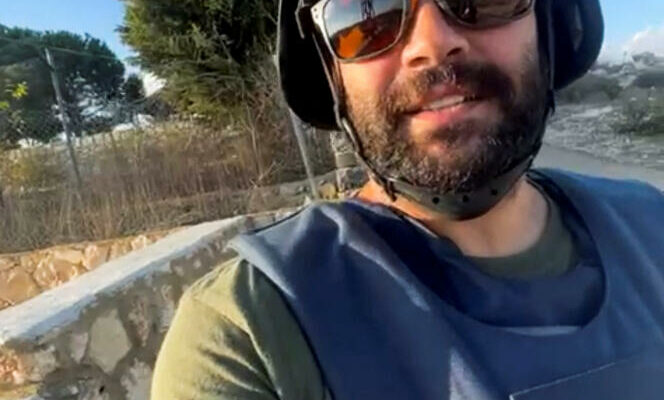An investigation by Agence France-Presse (AFP), published Thursday December 7, on the bombing that killed a Reuters journalist and injured six other journalists in southern Lebanon on October 13, refers to an Israeli tank shell.
The AFP and the Airwars collective of investigators and independent experts carried out a seven-week investigation based on evidence collected from testimonies, analysis of video recordings, satellite images and a fragment ammunition found on site.
Friday October 13, around 6 p.m., two close strikes hit a group of journalists who had come to cover clashes between the Israeli army and armed groups in southern Lebanon.
Almost daily exchanges of fire pit the Israeli army against Shiite fighters from the Lebanese pro-Iranian movement Hezbollah and the local branch of the Islamist movement Hamas, raising fears of an extension of the conflict caused by the unprecedented attacks by Hamas against Israel on October 7 .
Issam Abdallah, a 37-year-old Reuters journalist, was killed instantly and six reporters injured near the Lebanese village of Alma Al-Chaab, located 1.2 km from the border. Among them, two from Reuters, two from the Al-Jazeera channel, and two from AFP, including photographer Christina Assi, 28, seriously injured, who had to have her right leg amputated.
Israeli tank shell responsible for deadly strike
An imposing fragment of ammunition was found after the bombing very close to the remains of Issam Abdallah. It comes from the first strike, the one that killed the Reuters journalist and injured Christina Assi.
Photos of this essential piece of evidence were analyzed by six weapons experts consulted by AFP and Airwars. All agree that it is a piece of 120 mm tank shell stabilized by fins, typically used by the Israeli army on its Merkava tanks. No other military group or organization in the region uses this type of munitions, according to these analysts.

Two other investigations carried out separately by the human rights organizations Human Rights Watch (HRW) and Amnesty International, which AFP was able to consult before their publication on Thursday, both point to “Israeli strikes”.
HRW condemned “an apparently deliberate attack on civilians” Who “should or could be prosecuted for war crimes”. For Amnesty, “this is likely a direct attack on civilians which must be investigated as a war crime”.
Although it was not possible to identify precisely which tank fired, the investigation made it possible to identify a military position near the Israeli village of Jordeikh where, according to experts, the shell of deadly chariot.
The Israeli army initially said “very sorry” of the death of journalist Issam Abdallah, without recognizing his responsibility, and claimed to be carrying out “verifications”. Asked by AFP about the conclusions of its investigation carried out with Airwars, the Israeli army did not respond.
Targeted strikes
At the time of the strikes, the group of journalists was filming Israeli bombardments on Lebanese territory from the top of an open hill. All were equipped with helmets and bulletproof vests stamped ” press “with their cameras placed prominently on tripods.

According to the dozen witnesses interviewed – journalists, residents, local security sources – there was no military activity, nor any sign of the presence of any armed group in the immediate vicinity of the journalists during the hour preceding the ‘attack.
The World Application
The Morning of the World
Every morning, find our selection of 20 articles not to be missed
Download the app
It is unlikely that the reporters, clearly identifiable as such, could have been confused with fighters, given the means of surveillance available to the Israeli army, experts insist. That afternoon, a helicopter and at least one drone flew low over the area several times.
The fact that the journalists were targeted by two separate strikes 37 seconds apart, falling a few meters from each other, excludes the hypothesis of accidental shooting, experts say.
According to the latest tally from the Committee to Protect Journalists (CPJ) published on December 6, “at least 63 journalists and media employees” have been killed since the start of the war on October 7.
